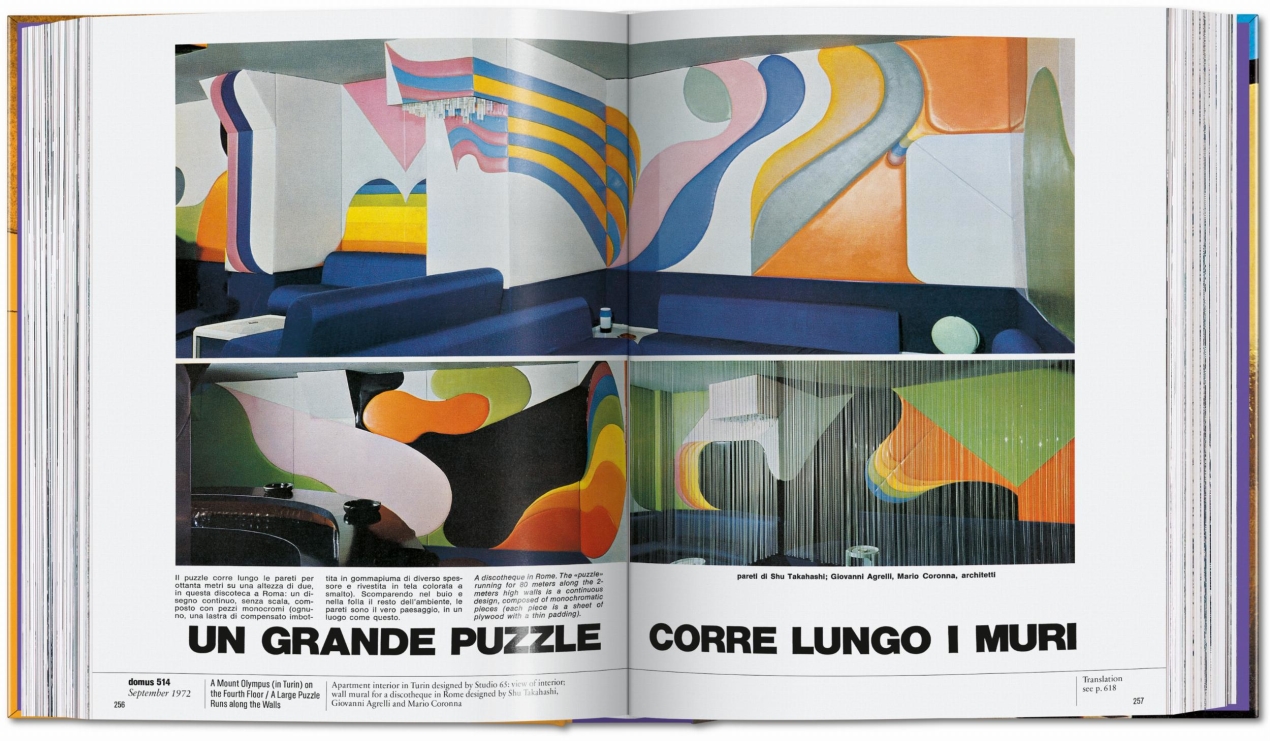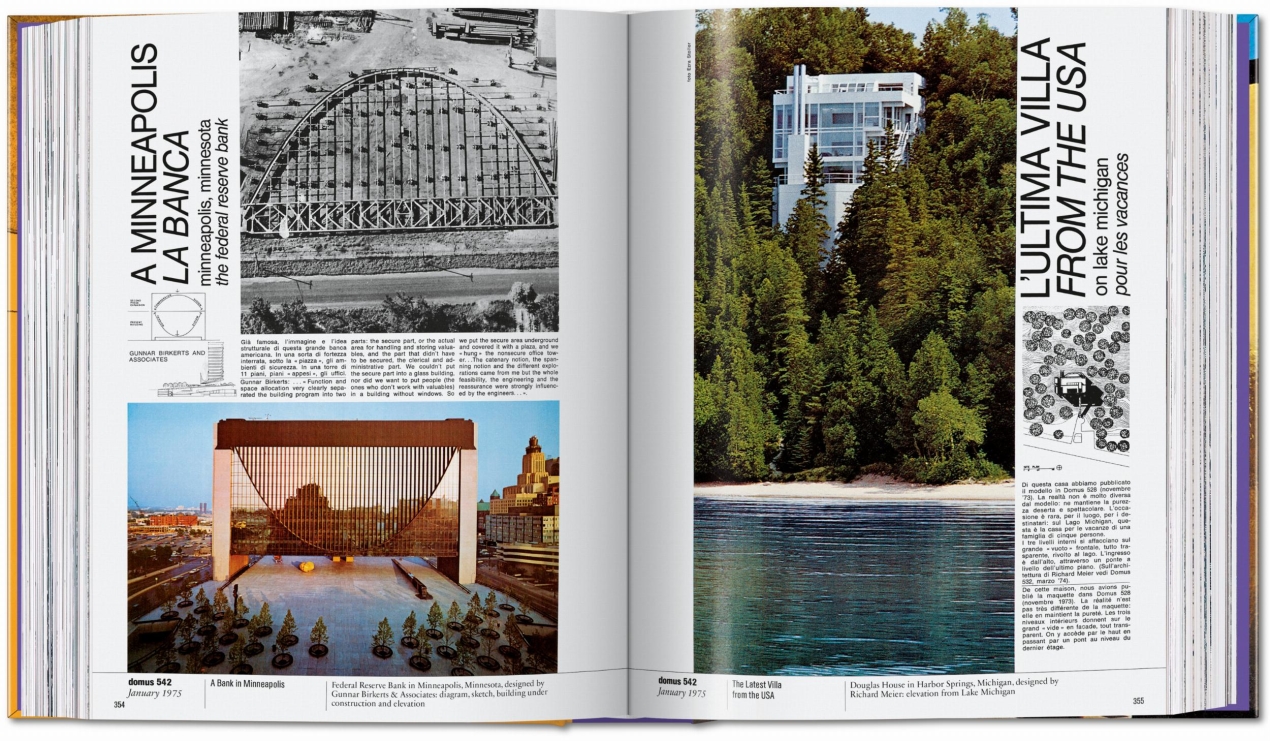domus 1970–1979

domus 1970s
40This fresh reprint of the 1970s domus coverage brings together the most important features from an era marking seismic changes in architecture and design. It was a time when individualism gained momentum as a novel style, and we began to notice the first postmodernist tendencies. Faced with the global energy crisis, architects and designers imbued their methods with a new ecological awareness.
For work to be featured in the magazine it had to offer function, spatial clarity, intellectual persuasion, relevant originality, and/or grace. Those groundbreaking projects and practitioners that made the cut include Shiro Kuramata, Verner Panton, Joe Colombo, Richard Meier, the modernist structures by Foster Associates and the Centre Georges Pompidou by Renzo Piano and Richard Rogers.
domus distilled
- Seven volumes spanning 1928 to 1999
- Over 4,000 pages featuring influential projects by the most important designers and architects
- Original layouts and all covers, with captions providing navigation and context
- Introductory essays by renowned architects and designers
- Each edition comes with an appendix featuring texts translated into English, many of which were previously only available in Italian
- A comprehensive index in each volume listing both designers’ and manufacturers’ names
L'editore
Charlotte and Peter Fiell are well-known design authors having written over 70 books on the history, theory, and criticism of design. The Fiells have lectured widely, guest taught courses, curated exhibitions, and consulted manufacturing companies, museums, salerooms, and major private collectors around the world. Together, they have written numerous TASCHEN books, including 1000 Chairs, Design of the 20th Century, Industrial Design A–Z, 1000 Lights, Scandinavian Design, and, most recently, the double-volume Ultimate Collector Cars, Ultimate Collector Motorcycles and Ultimate Collector Watches.
domus 1970–1979
Copertina rigida, 19.6 x 25.5 cm, 2.08 kg, 640 pagineISBN 978-3-8365-9386-1
Edizione: IngleseNon sono state ancora pubblicate recensioni per questo articolo. Sii il primo a valutare questo prodotto.











